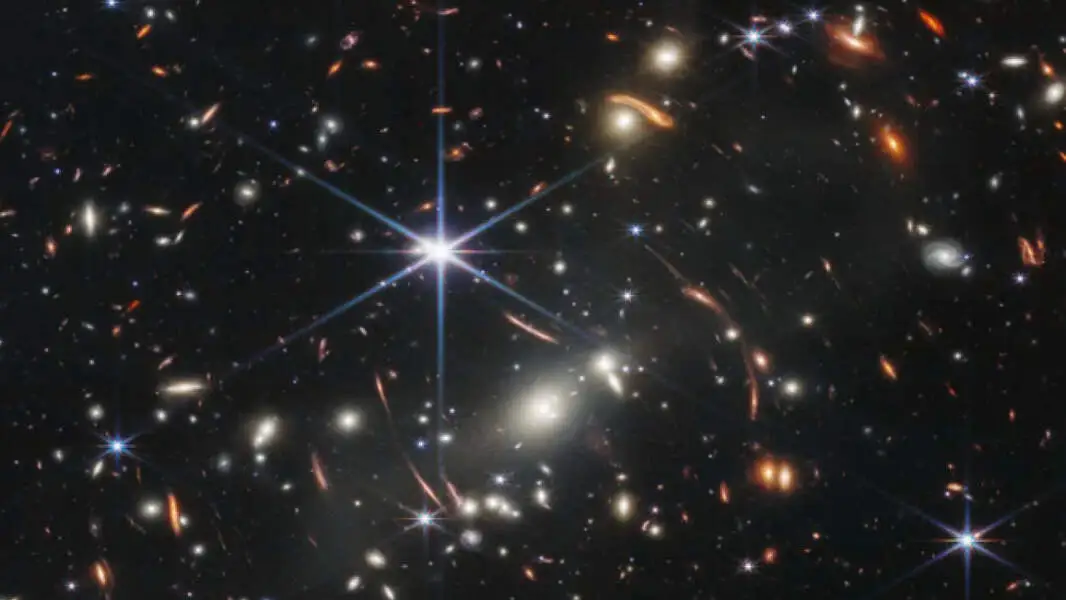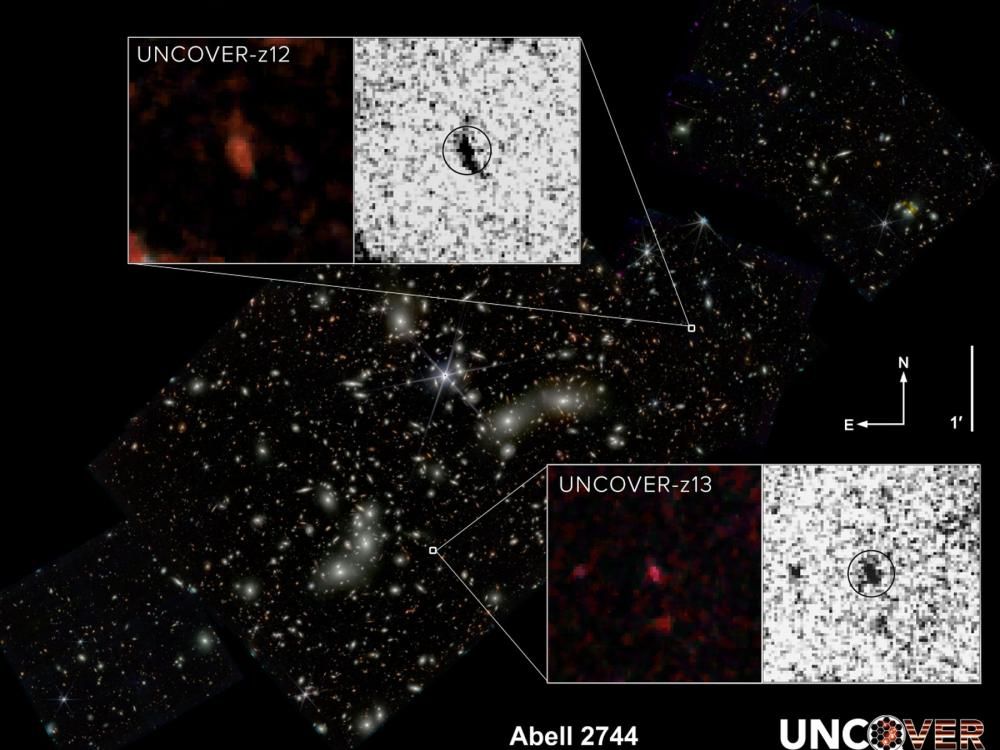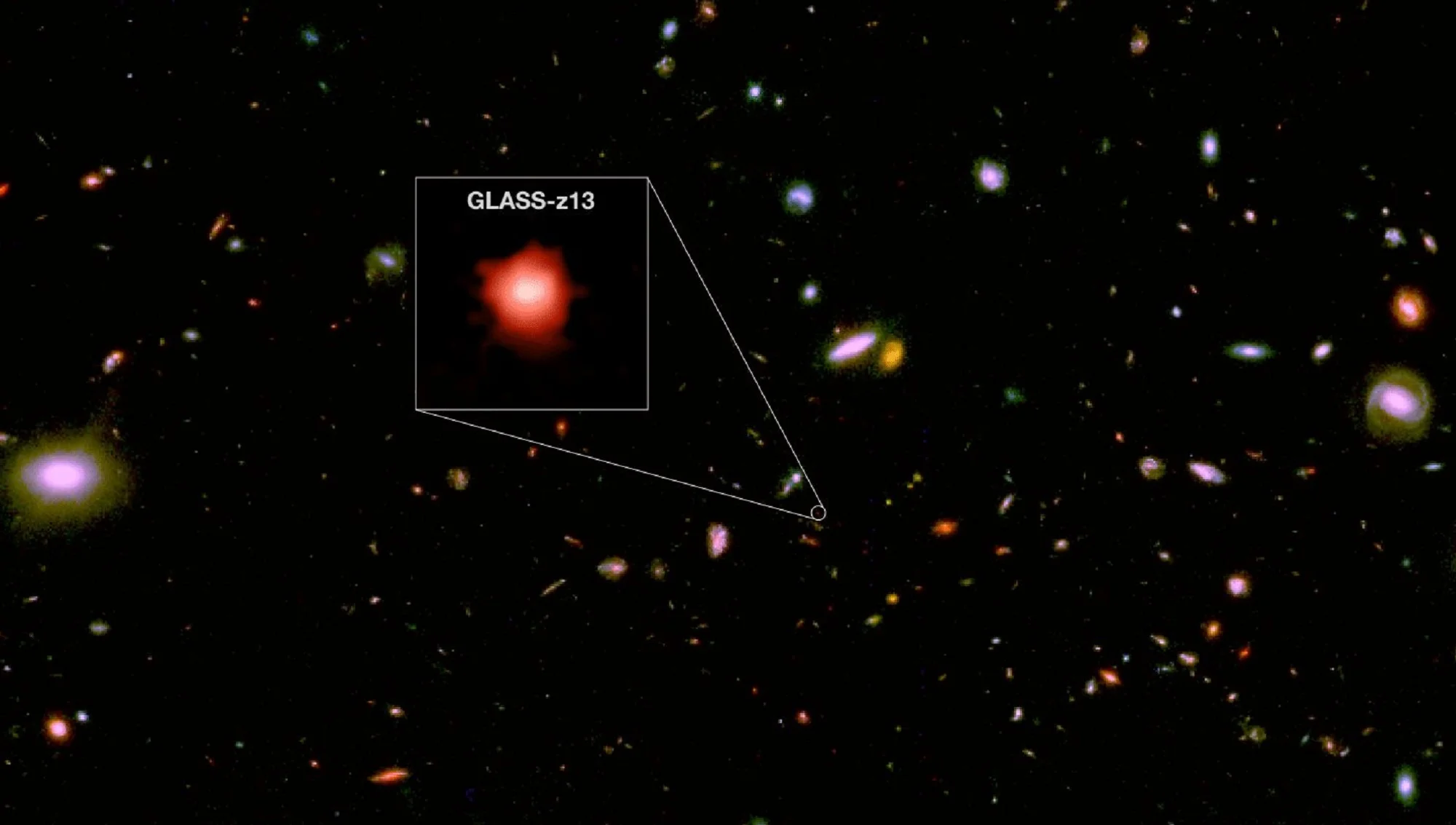(CTN News) – In a groundbreaking discovery, the James Webb Space Telescope (JWST) has unveiled the second and fourth most distant galaxies ever observed, shedding light on the cosmic narrative as described by the Big Bang theory.
The galaxies, named UNCOVER-z13 and UNCOVER-z12, were spotted with the help of the massive gravitational lens provided by the galaxy cluster Abell 2744, also known as Pandora’s Cluster.
Gravitational Lensing Illuminates Cosmic Past
Situated 3.5 billion light-years away, Pandora’s Cluster possesses immense gravity, warping the fabric of space-time and magnifying the light of galaxies even farther away. This gravitational lensing effect allowed Bingjie Wang and the James Webb Space Telescope UNCOVER team to identify the lensed images of these high-redshift galaxies, providing a glimpse into the universe’s early stages.
Redshift and the Journey Through Time
The redshift, a result of the continuous expansion of the universe, played a crucial role in this discovery. UNCOVER-z13, with a redshift of 13.079, stands as the second most distant galaxy, existing just 330 million years after the Big Bang. Meanwhile, UNCOVER-z12, with a redshift of 12.393, secures the fourth position, capturing a moment 350 million years after the universe’s birth.
Galactic Anomalies Challenge Preconceptions
What sets UNCOVER-z13 and -z12 apart is their structural appearance. Unlike previously discovered galaxies at similar redshifts, these galaxies exhibit distinctive shapes — one elongated like a peanut and the other resembling a fluffy ball. Moreover, these galaxies are larger, with UNCOVER-z12 boasting an edge-on disk six times larger than its counterparts from the same era.
Supporting the Big Bang Model
Despite their unique features, both UNCOVER galaxies strongly support the Big Bang model. These early galaxies, characterized by their youth, small size, low abundance of heavy elements, and active star formation, align with the paradigm of galaxy formation postulated by the Big Bang theory.
James Webb Space Telescope’s Gaze into the Cosmic Unknown
While these discoveries are groundbreaking, the James Webb Space Telescope has the potential to uncover even younger galaxies with higher redshifts. The absence of such detections in the lensed images could suggest that galaxies may not have formed before that time or that the observational window was limited.
Future Endeavors: Expanding the Horizon of Galactic Discoveries
Astronomers remain vigilant, utilizing various lensing clusters to explore new windows into the deep universe in search of the earliest galaxies. The quest for understanding the origins and evolution of galaxies continues, with the James Webb Space Telescope at the forefront of unraveling the mysteries of our cosmic past.
This historic revelation, reported in Astrophysical Journal Letters on November 13, marks a significant stride in our exploration of the universe’s infancy.








